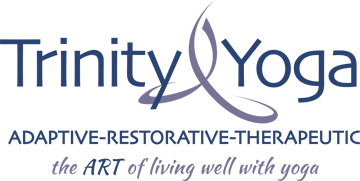In Chennai, India at the Krishnamacharya Yoga Mandarim I am attending the Universal Yet Personal Program, a one month intensive for international students. There are 34 others in the class and we bring experiences of yoga and life from 12 countries. We have completed the first week of training and I now sit down with a chai to reflect upon the experience.
Today TKV Desikachar, the well-known teacher, scholar, healer and founder of the mandarim, spoke on symbols and symbolism. He began with an invocation chant honouring his father and teacher, Tirumalai Krishnamacharyca, who stood behind him in a photograph draped with a garland of marigolds. Desikachar is an inspiring speaker and delightful man with a wisdom, joy and lightness about his being. For me, he seems to exemplify the essence of yoga. Throughout his lecture he quoted Sanskrit sloka from the Yoga Sutras and used examples from his life to explain the meaning of the yamas and niyamas. It is an honour to be learning directly from this lineage.
KYM is a modest building with bamboo posts and a palm-thatched roof. It is believed a place of great spiritual significance as Krishnamacharya was here while living. There is a sense of great reverence for our guru, who is largely responsible for the resurgence of yoga in India in the 1930’s through his teachings, demonstration tours and students Patabbhi Jois, BKS Iyengar, Indra Devi and of course his son, TKV Desikachar. Our classes are taught by the mandarim’s senior teachers with lectures by Desikachar and his son Kaustub. Much different than the west, the teachers (and students) wear saris or salwar kameez and we practice on rugs instead of sticky mats. At the program orientation each of us was greeted with a garland of white, fragrant flowers and a snack of nuts and fruit. S. Sridharan, the managing trustee of KYM addressed us with a request to not judge our lessons quickly – to allow the flower to bloom. Insightfully, he knew that we all come from different cultures and traditions of yoga with various expectations.
The schedule each day consist of the following classes: asana and pranayama, theory of asana and pranayama, philosophy of yoga, vedic chanting (optional), applications of yoga (yoga therapy) and meditation. Often in the evenings there are guest lectures and entertainment.
Each day the asana practice builds upon a basic foundation, adding more complicated asanas and sequences. It is a dynamic practice with a strong emphasis on linking the mind to the breath and body. In theory class we have examined the breath in depth. Unlike many schools of yoga this tradition teaches that the inhalation should be initiated in the upper chest rather than the abdomen, which can restrict the chest and cause a curvature in the lower spine. Chanting class, taught in the Vedic tradition, is a joy and a challenge. Our teacher, Jayanthi, catches each and every incorrect note. The class on applications of yoga consists of workshops, case studies and new information regarding yoga therapy, a major focus at KYM.
Applying the lessons of the classes and the Yoga Sutras is perhaps the most challenging aspect of the course. In today’s lecture Desikachar suggested that we use our personal sun meditation as svadhyaya (self reflection). It should take 25 minutes and if it is shorter we will know that we are dealing with the guna rajas and perhaps need some relaxation exercises. If it is longer we are dealing with tamas and need to practice asanas that invigorate the mind. We can use these findings as consideration while making decisions during the day.
Here in the crowded, dirty, polluted, noisy and poverty-stricken city of Chennai I am working very hard at samtosha (contentment or acceptance of what is). Luckily I am able to spend my lunch breaks at the Krishnamurti Foundation and some evenings listening to devotional singing in the Sri Rama Krishna Temple. I will write again as the flower blooms. Om shanti, shanti, shanti-i.
